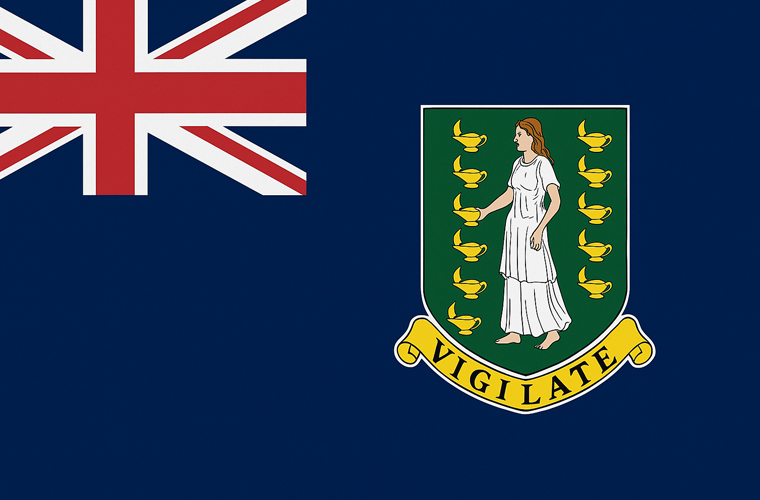Nestled in the heart of the Caribbean, Tortola stands as the largest and most vibrant island in the British Virgin Islands (BVI), a British Overseas Territory renowned for its turquoise waters, lush hills, and laid-back island charm. With its blend of natural beauty, rich history, and thriving maritime culture, Tortola offers visitors a perfect mix of adventure, relaxation, and tropical elegance.
Tortola’s name, derived from the Spanish word tortuga, meaning “turtle,” was given by early explorers who noted the abundance of sea turtles in the surrounding waters. The island’s history is a tapestry woven with indigenous Taino heritage, European colonization, and African influence. First inhabited by the Ciboney and later the Arawak and Taino peoples, Tortola was claimed by the Dutch, English, Spanish, and Danish over the centuries. The British took formal control in 1672, and the island became a key part of the colonial trade network, particularly in sugar and rum. Today, the legacy of this diverse past lives on in the island’s architecture, cuisine, and cultural traditions, making Tortola not just a tropical paradise but a place with deep historical roots.
Tortola spans approximately 21 square miles (55 sq km) and is characterized by its rugged, mountainous interior, lush rainforests, and pristine coastline. The island’s highest point, Mount Sage, rises to 1,716 feet (523 meters) and is part of the protected Sage Mountain National Park—one of the oldest national parks in the Western Hemisphere. This verdant sanctuary is home to rare orchids, colorful birds like the bananaquit and bridled quail-dove, and panoramic views of the surrounding archipelago. The coastline is dotted with secluded coves, powdery white-sand beaches, and coral reefs teeming with marine life. Popular beaches such as Cane Garden Bay, Smuggler’s Cove, and Brewers Bay offer ideal spots for sunbathing, swimming, and snorkeling. The island’s location within the Virgin Islands archipelago also makes it a prime hub for sailing and island-hopping.
Road Town, the capital of both Tortola and the British Virgin Islands, sits on the southern coast and serves as the island’s administrative, commercial, and cultural center. The town blends colonial charm with modern amenities, featuring pastel-colored buildings, historic sites like the BVI Tourist Board and the old HM Prison, and bustling markets offering local crafts and cuisine. Road Town is also the main port of entry for cruise ships and yachts, making it a lively gateway for visitors. The nearby Soper’s Hole Marina and the larger Road Town Harbour are central to the island’s reputation as a world-class sailing destination.
Tortola is often hailed as the “Sailing Capital of the Caribbean,” and for good reason. Its protected waters, consistent trade winds, and proximity to over 50 islands and cays make it a dream destination for sailors and boaters. The annual BVI Spring Regatta & Sailing Festival, held each March, draws international competitors and spectators, showcasing the island’s vibrant maritime culture. Chartering a sailboat or catamaran from Tortola allows adventurers to explore nearby gems like Virgin Gorda (famous for The Baths), Jost Van Dyke (home of the legendary Foxy’s Taboo), and Norman Island (rumored inspiration for Robert Louis Stevenson’s Treasure Island). Tortolan culture is a vibrant fusion of African, British, and Caribbean influences. Music plays a central role, with reggae, soca, and calypso rhythms filling the air at beach bars and festivals. The annual Emancipation Festival, held in August, celebrates the abolition of slavery with parades, boat races, music, and traditional dances.
Culinary delights abound, with local dishes such as conch salad, fish and fungi (a cornmeal-based side dish), and saltfish and johnnycakes reflecting the island’s heritage. Fresh seafood, tropical fruits, and locally brewed rum are staples, best enjoyed at seaside shacks or upscale waterfront restaurants. In recent years, Tortola has placed increasing emphasis on sustainable tourism and environmental conservation. Efforts to protect coral reefs, reduce plastic waste, and promote eco-friendly practices are evident across the island. Organizations and local initiatives promote responsible travel, including the use of reef-safe sunscreen and support for local farmers and artisans. Tortola is accessible via air and sea. The Terrance B. Lettsome International Airport (EIS) on Beef Island, connected to Tortola by a short bridge, receives flights from Puerto Rico, St. Thomas, and other regional hubs. Alternatively, ferries from St. Thomas (U.S. Virgin Islands) provide a scenic and convenient route.
The best time to visit is during the dry season, from December to April, when the weather is sunny and temperatures range from 75°F to 85°F (24–29°C). However, the island’s tropical climate ensures warm weather year-round, with the green season (May to November) offering lush landscapes and fewer crowds—though with a higher chance of brief rain showers. Tortola is more than just a tropical getaway—it’s a destination where natural splendor meets cultural richness and maritime adventure. Whether you’re anchoring a sailboat in a secluded bay, hiking through a misty rainforest, or dancing to soca under the stars, Tortola captures the essence of Caribbean life at its most authentic and enchanting. As the largest island in the BVI, it proudly wears its crown as a true gem of the eastern Caribbean.

